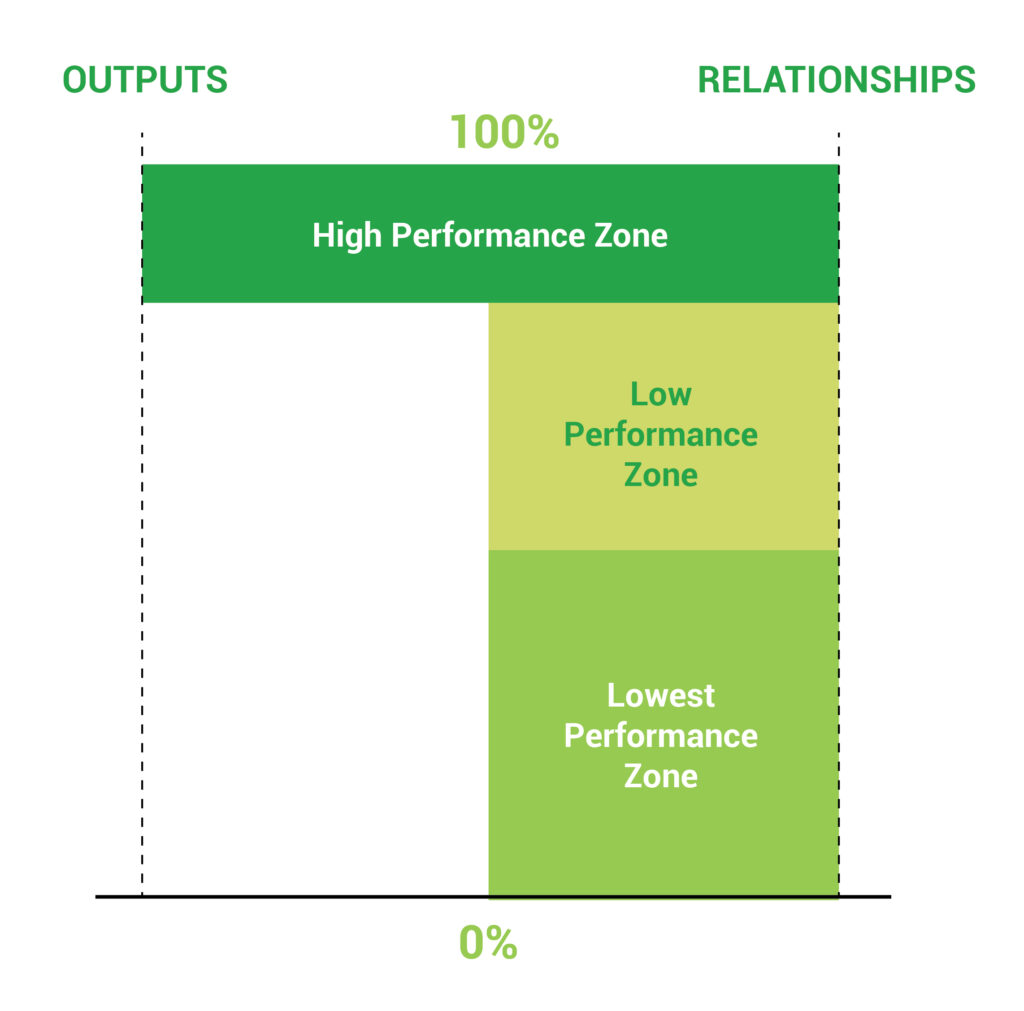Anton Guinea
Entrepreneur, Speaker, bestselling author, and founder of The Guinea Group of Companies. For over 15 years, Anton has helped leaders move their teams to become psychologically safe, physically safe and overall better versions of themselves.

How do you deal with a team in turmoil?

Recently, I wrote a post about leaders who want to make their high performing team even higher performing. Most of my work is with these teams – teams who are in good shape, and who are trying to improve their performance.
Remember, though, we still get some calls from leaders (generally frustrated or struggling) who have a team in turmoil. A team who are not functioning as they should, and who are not communicating with care, and who don’t have a psychologically safe culture.
Sadly, I have had afew of these conversations, and I can help the leader save some time on the phone with me … If I have a relationship with the leader, my first question is “who is the person?” Or “who are the two people?” The reason that I ask one of those questions is that it is generally never more than one or two team members who are struggling to connect … that affect the whole team dynamics.
If you have been following my posts, you will know that 1) I am a fairly simple writer (and human), and 2), I break team dynamics down to two things. Outputs and relationships. This is our high performing team model. The outputs are what the team does. The stuff. The things. The KPIs, the measures, the outcomes, the production from the team. The relationships are how the team does they do. How the team members work together. The communication, the connection, the care factor, and the psychological safety.
The main thing to consider is that most teams will tell me (when we do a survey) that their outputs are going well. They get their work done. A team in turmoil might even rate themselves as being high on outputs. The challenge is that outputs are at risk if relationships are not strong. In my experience, a team in turmoil is just not able to sustain high output for a long period of time, when the team members struggle to work and deal with each other.
See the model below:

From a ‘how to’ perspective – in short, if you have a high performing team, focus on outputs, because your relationships are in good shape, and your team could work together to get more done (if they are not already at capacity). If you have a team in turmoil, it is time to really lean into the relationships in your team, and how to improve them. But how do you do that you ask. Glad you did, here are some thoughts, and three things you might consider.
1. A Team Charter session will really help
Team charters are a winner. But the message here really is – don’t try this at home (or alone) without a strong and capable facilitator. Might be a TGG facilitator (reach out) or someone from HR or from BI. Please, as the leader, if you have a team in turmoil, don’t take this on yourself. You need to lead the session, not run it. Facilitating a team charter workshop with a team in turmoil is a learnt skill, and one that takes a significant amount of conversational control. Conversational management. Because there will be conflict.
Oh, what is a team charter? Glad you asked that question, too! A team charter is an overview of things like team beliefs, behaviours, or visions or values. Team charters help connect teams back to what both purpose and people.
It is what we all commit to doing, and how we commit to being. How we will treat each other. How we will communicate. And what happens when we don’t follow through on our commitments to treat each other with respect and high care factor. We don’t have to be best friends with our teammates, but we do need to be able to work with them, in a respectful way. If you would like an enjoyable work life, that is. And if you don’t want to work in a team in turmoil.
From experience, a team charter would be the best way to create alignment in a team that is not working together. Don’t thank me now.
2. Leadership conversations also help
One of the biggest issues with teams in turmoil (in my experience) is that the leader is avoiding the conversations that matter. The leader does not want to address the team members that are causing the challenges.
You see, what can happen is that the team member/s causing others grief can be the highest performers. These team members are high in the output section. The leader is afraid that if they take on the high performer, even when they are disrespecting others, the team member might drop off on performance, or might leave.
Remember this – you can’t lead someone you need. Your highest performers don’t have the right to hurt others, just because they are high performers. Leaders, have the conversation. It is not a performance conversation; it is a values-based conversation. It is a code of conduct conversation.
Remember this – what you walk past you condone. The more the leader ignores the behaviour, the more the team loses faith in their leader. Because the leader is not addressing the issue. And the team is still in turmoil. And yes, sometimes I get the job of talking to all team members to understand what is happening in the team. Which is cool, I can be unbiased – but at the end of the day, with or without the information I provide – the leader will have to have leadership conversations.
And the leader will need to set behavioural boundaries!
3. Pay attention to triggers
Understand the concept of triggers. And how both leader behaviour, and team member behaviour causes unwanted and negative emotions to show up. And to show up in a way that drives poor behavioural response patterns. What I mean by triggers is those words or actions that cause team members to lose their cool.
In other words, they lose their marbles, and say or do things are uncool.
If you are a leader, consider understanding more about Daniel Goleman’s (author of the book Emotional Intelligence) work on triggers. One thing that is worth researching is Goleman’s list of triggers. In short, the top five negative emotional triggers in the workplace which Goleman lists are as follows:
- Condescension and lack of respect
- Being treated unfairly
- Being unappreciated
- Feeling that you’re not being listened to or heard
- Being held to unrealistic deadlines
These areas tap straight into the Amygdala, and the limbic system – the structure in the brain that deals with fight, flight, or freeze – and thus this area is responsible for instant emotional reactions such as high levels of stress and panic. And anger.
As a leader, or even as a team member, these triggers are important to understand. Because the more you can avoid doing or saying something that would cause a team member to feel any of the above, the better. And the better results (outputs), and better relationships you will foster.
I partner with leaders who are under pressure, to help them create conscious control, so that they can develop psychologically safe and high performing teams.
And please click the image below if you’d like to chat about what leadership means to you.
If you would like to learn more about Anton or The Guinea Group, please click here to book into Anton’s calendar, to:
UPGRADE your Mindset
UPSKILL your Leadership
UPLIFT your Teams
About Anton
Anton has dedicated his working life to helping leaders to upgrade their mindset, upskill their leadership, and uplift their teams! With a focus on helps leaders to better lead under pressure. Anton is an entrepreneur, speaker, consultant, bestselling author and founder of The Guinea Group. Over the past 19 years, Anton has worked with over 175+ global organisations, he has inspired workplace leadership, safety, and cultural change. He’s achieved this by combining his corporate expertise, education (Bachelor of HR and Psychology), and infectious energy levels.
Work With Anton!
Sources:
Subscribe to our Newsletter
